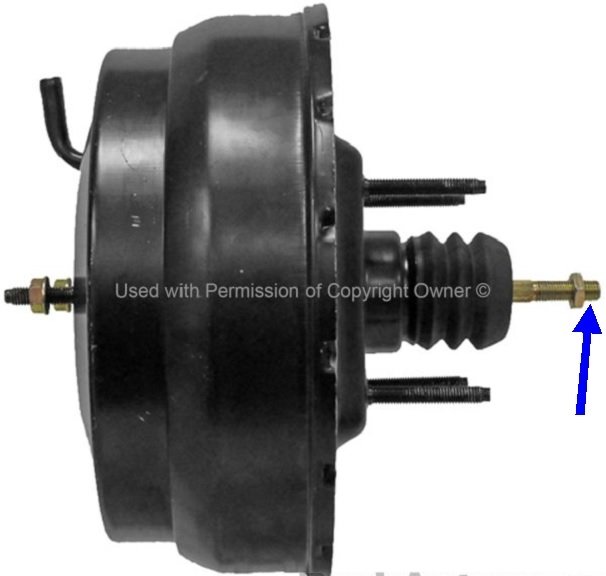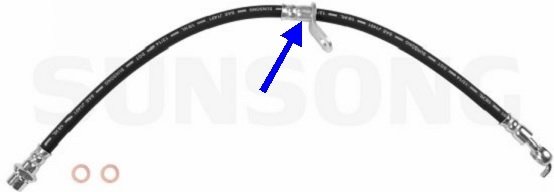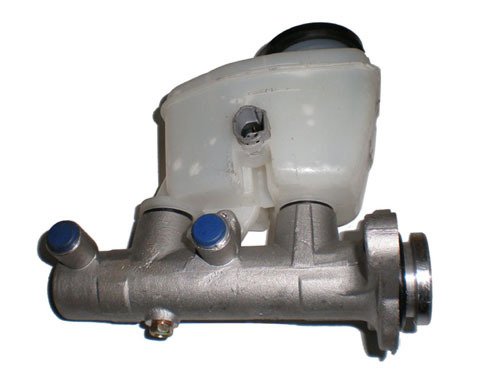Air in the hydraulic system causes the opposite problem. The brake pedal would be low and mushy. Air can compress, so a blockage in a line would allow heating brake fluid to expand rather than apply the brakes harder.
Regardless of the cause, if brake fluid warms up, it is going to expand, then it has to be able to flow back up into the reservoir. Something is preventing that from occurring. That causes expanding fluid to apply the brakes harder and harder. What we need to do now is get the problem to occur, then open the hydraulic system in various places to see what allows the locked brakes to release. If you loosen the soft metal line nuts at the master cylinder and the brakes release, that proves the master cylinder and its adjustments are what we need to look at. The expanded fluid was allowed to release through the loosened lines.
If the brakes still don't release with the lines loosened at the master cylinder, the next easiest place is to open the bleeder screws on the calipers. While much less likely, if they still don't release, suspect a problem with the caliper mounts and / or slides. Look for grooves worn in the mounting surfaces that the caliper is catching on. Siennas use replaceable stainless steel shims with anti-rattle clips. Those can cause misery when trying to install new pads. On one I worked on recently, one side went together extremely easily. On the other side I was tempted to throw those inserts away. I had to fight for quite a while to convince the parts to go together. If one of those was left off during the last brake job, the caliper might be sticking. The clue here is cooling down usually doesn't affect how the problem occurs or is resolved.
You said the rubber flex hoses were already replaced so I kind of skipped over that. This is still a good suspect if the brakes release when you open the bleeder screw on the caliper. Two defects can occur. One has to do with any model that uses a metal bracket crimped around the middle of the hose, as shown by my blue arrow. Rust can develop inside that crimp and constrict the hose. You can force brake fluid through that restriction with your foot, but the fluid can't release freely to return to the caliper. This is where its being trapped keeps the brakes dragging which builds more heat. That heat migrates into the fluid causing it to expand and apply the brake even harder.
The second defect occurs when the caliper is allowed to fall or hang freely on the hose while a brake job is being performed. That can tear the inner liner causing it to form a one-way check valve. The passage through the hose isn't very big, so it doesn't take much to block it. The best place to verify this is to loosen the soft metal line nut where the steel line connects to the rubber hose. If that is rusted tight, the next best place is where that steel line comes out of the anti-lock brake hydraulic controller.
Rubber brake line problems affect only that one brake. While it is possible to have two individual hose problems develop at nearly the same time, the better approach with multiple locking brakes is to look at what they have in common. That's why I started with the master cylinder "input" side, meaning the pedal, push rod, and booster.
See how far you get with this information, then we'll continue on.
Image (Click to make bigger)
Tuesday, August 9th, 2022 AT 12:35 PM




